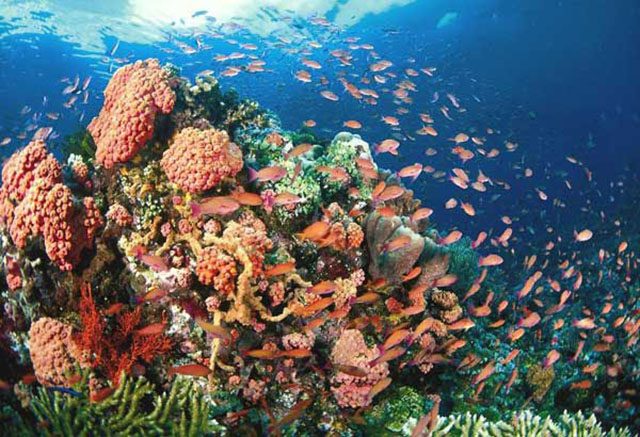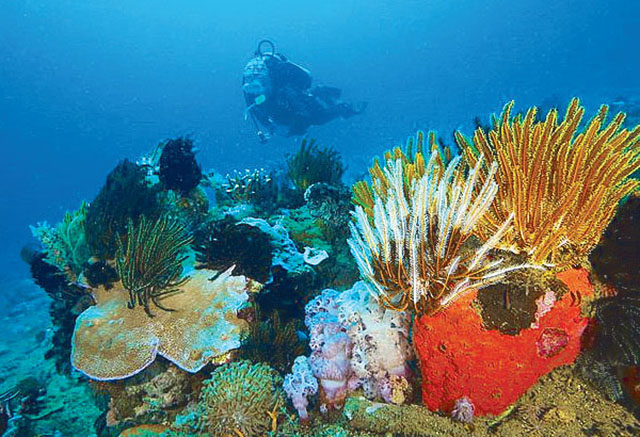
A picture that featured tourists holding corals as souvenirs from their vacation was negatively received on the internet, but it was able to raise awareness on why coral picking is damaging for the environment.
Facebook page “Project Alagalaan” shared the picture and censored its owner, adding that it was posted in May. According to the information they gathered, the tourists were supposed to see dolphins that time but they were not able to do so.
As a form of “compensation,” they were instead allowed to pick corals from the sea. The exact location of the beach remains unknown but it was tagged in Vallehermoso, Negros Oriental.
In the post’s caption, they noted the negative effects of coral picking and why corals are not supposed to be touched or disturbed in any way.
Why it’s bad to pick corals
“Project Alagalaan” posted facts that support their statements against coral picking.
Corals are alive
Corals are living organisms, even though they look like rocks. According to the National Ocean Service, they are “a sessile animal” that lives on the ocean floor, hence the misconception that they are plants.
They rely on their tentacles to capture food in the water and sweep it into their mouths. They also need sunlight, clear water and warm weather temperature in order to survive.
They are a colony of animals
In the picture shared by the page, the tourists held “coral blocks” that are mentioned as “a colony of hundreds or thousands of animals called polyps.”
These polyps are the building blocks of the corals. Polyps are “tiny, soft-bodied organisms related to sea anemones and jellyfish,” noted National Geographic.
They connect to one another and create a colony that acts as a single organism. Eventually, these polyps grow and connect with other colonies, forming reefs.
They offer lots of benefits
Coral reefs are helpful in lots of ways. International Coral Reef Initiative noted that they are “home to a multitude of different types of fish, invertebrates and sea mammals.”
They are known to support around 25 percent of the entire marine life which has over 4,000 species of fish alone.
Coral reefs act as the refuge and feeding areas of fishes, sponges, worms, crustaceans, mollusks, starfishes, sea urchins, sea cucumbers, sea squirts, sea turtles and sea snakes.
Coral reefs act as the refuge and feeding areas of fishes, sponges, worms, crustaceans, mollusks, starfishes, sea urchins, sea cucumbers, sea squirts, sea turtles and sea snakes.
In addition, they can also provide “coastline protection,” according to a study published in Nature Communications.

The study, led by Nature Conservancy’s lead marine scientist Michael Beck, discovered that coral reefs are a “cost-effective alternative to manmade structures.”
The coral reefs “dissipate 97 percent of the wave energy that would otherwise impact shorelines.”
They are also known to be a source of medical advances. The Nature Conservancy noted that secosteroids, an enzyme used by corals to protect themselves from disease, is used to treat asthma, arthritis and other inflammatory disorders.
Scientists have also discovered that the organic chemicals from a coral called Caribbean sea whip have an “impressive anti-inflammatory effect on human skin.”
Coral reefs are also fragile despite looking like rocks. According to Reef Relief, the mere act of being touched or being stepped on is enough to harm them.
“Even if a coral is not visibly harmed, human touch can make them more vulnerable to death and disease,” they noted.
The Nature website explains that “even though the coral’s inner skeleton is hard, the polyps are fragile. Even touching them with your fingers can damage them. The skeleton itself is not only hard but very sharp — made of lots of little pointy bits.”
“The coral’s tissue is just a very thin layer on the top of this hard, pointy skeleton, so when the polyps are pushed against the skeleton, they essentially can be impaled on their own skeleton,” it said.
A report by World Economic Forum states that in today’s environmental conditions, 60 percent of the coral reefs are estimated to be “critically threatened” by 2030.
Every year, 98 percent of the coral reefs are already exposed to “potentially fatal conditions.”









